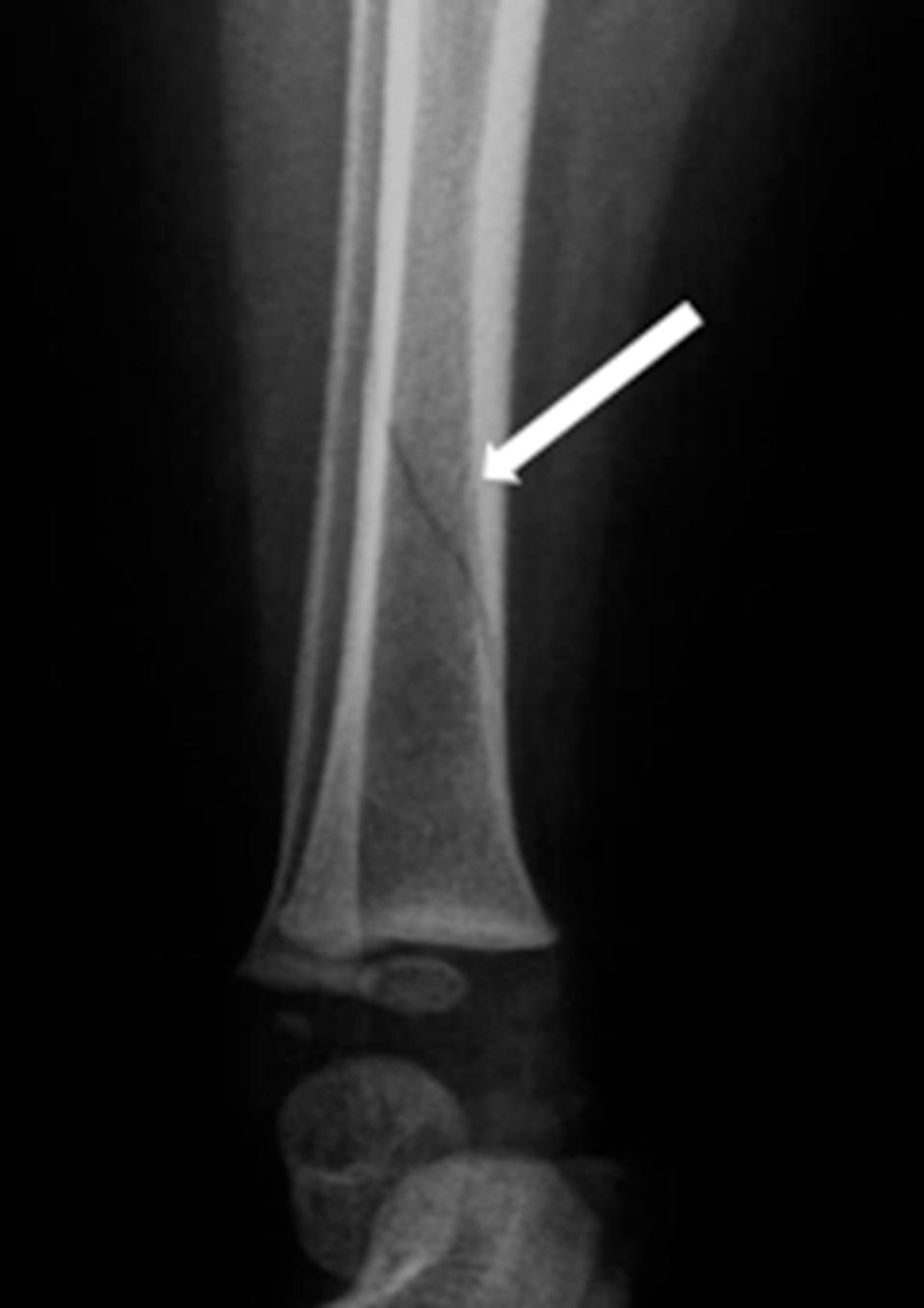Introduction
A Toddler’s fracture is a small break, often referred to as a ‘hair-line fracture’, to the shin bone (tibia), the large bone in the lower part of the leg (Figure 1).

Toddler’s fractures are very common in infants and young children under 3 years of age. It is usually caused by a minor fall or a simple twisting of the leg. These fractures heal really well and cause no lasting problems for your child.
What are the signs and symptoms?
Your child may well have started limping, or refused to walk or stand on their leg for no apparent reason; you may not even remember them falling or injuring themselves.
What tests may be done?
A healthcare professional may suspect your child has a toddler’s fracture if they are not using their leg as they normally would. This might mean they are refusing to walk, or they are limping. Your child may have an x-ray.
Toddler’s fractures don’t always show up on the first x-ray because it is so small. In some cases, a child will be managed and treated as if they have a toddler’s fracture, even if the X-ray looks normal.
What is the treatment for a Toddler’s fracture?
The healthcare professional will discuss a treatment plan with you. It is not always necessary to immobilise the leg with a cast/walking boot.
Your child may only require simple painkillers such as Paracetamol and Ibuprofen, and rest.
If they are placed in a cast/walking boot, they will usually wear this for around 2 weeks.
What should we do when we get home?
We recommend that you give your child regular paracetamol and / or ibuprofen for the first 48 hours.
What to expect
During the first week following a toddler’s fracture injury, your child may be reluctant to walk or use their leg and this is normal. They may experience some discomfort, but this should not be enough to stop them wanting to play in ways that do not involve using their leg.
As the fracture heals, your child will start to use their leg more and be able to weight bear and walk. If your child has a cast, this can make it harder for your child to move as they normally would.
When the cast is removed, it is normal for a child to be initially hesitant to use their leg, usually for the first few hours but occasionally may be longer – a day or so. This should improve and they should be able to use and put weight on their leg.
When your child begins to weight bear on the injured leg and walk it may look differently to how they used to, but this should get back to normal over the next few weeks but sometimes it can take a few months for their walking to return to normal.
As long as your child shows signs of gradual improvement, there is no need for further review.
Problems to be aware of:
If you notice any of the following, you should seek advice from a Healthcare professional:
- Your child is in pain that is not getting better with pain relief medication.
- Your child has a new pain, or their pain is getting worse.
- Your child’s injured leg, or their foot or toes on the injured side look swollen.
- Your child says that they have a tingling feeling in their injured leg, or their foot or toes on the injured side.
- The plaster cast looks or feels too tight.
Accessible formats
If you require this information in a community language or alternative format such as Braille, audio, large print, BSL, or Easy Read, please contact the Equality and Human Rights Team at: email: fife.EqualityandHumanRights@nhs.scot or phone 01592 729130. For people with a hearing or verbal impairment you can also contact the team through the NHS Fife SMS text service number on 07805800005.
